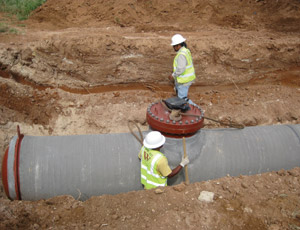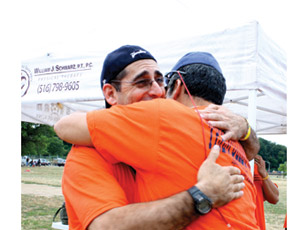Lower Manhattan Starbucks would be the last place one would expect to find the man New York City prosecutors tried to portray as “Wild Bill Rapetti.”


Rapetti, the master rigger who was recently acquitted on manslaughter charges stemming from the deadly collapse of a 200-ft tower crane in Manhattan in 2008, was called “reckless” by the prosecution and vilified as the “killer crane rigger” in the tabloids.
But on a recent morning, Rapetti sat in the coffee shop, sipping a passion fruit Tazo iced tea, explaining that he’d quit caffeine for several years. But the tea’s calming effects have their work cut out for them. Despite the acquittal in his criminal trial, his crane operating and rigging licenses remain suspended. He also faces multiple OSHA violations, records show, and is named as a defendant in numerous civil suits.
Having spent many hours in prison (“very traumatic for me”), been taken on a “perp walk” past the full force of the New York press corps (“disgusting”), been called a “killer” in print (“my whole family was so upset”), faced tenacious criminal prosecution (“I didn’t feel that [the prosecutor] was the advocate for the people”) and prohibited from making a living after his exoneration ( “once again, another slap down”) Rapetti was initially guarded as he sat down with ENR for an exclusive interview, shifting often in his window seat.
He soon relaxed, and even smiled and laughed as he recounted the certain unexpected details of his trial. One of his lawyers, for example, was afraid of heights, and would not go above the third floor when he gave them a tour of the construction site. Rapetti credits much of his defense’s success to his attorneys’ hands-on approach to the case and his eyes lit up as he explained that many of the strategies were his ideas. He said he personally helped construct the crane model the defense used to make their case, suggested re-creating the conditions of the collapse in an experiment using the fallen crane in a vacant lot, and walked the lawyers through daily operations on a job site.
As he had throughout the trial, on this day he wore a pin of the Italian Catholic Saint Padre Pio on the buttonhole of his white, Nike polo-style shirt – a pin he says he has worn every day since a friend gave it to him to help him through “difficult times.” Clearly, those hardships have not ended with his acquittal, and during our conversation he showed that he is facing them with determination, acceptance, perseverance and cautious optimism.
New York Construction: How did you prepare for the trial?
William Rapetti: By teaching [attorneys Arthur Aidala and John Esposito and Marianne Bertuna] the business. The prosecution didn’t have a clue so far as what really goes on. I retained them in January of 09, and pretty much from that point on was teaching them. I took them to jobs, introduced them to guys in the field doing the work. They actually went on climbs, on erections and dismantling jobs. So it was a year-long experience.
NYC: Was showing them the job site your idea or their idea?
WR: It was my idea because there was no way … That was my fear that nobody could really understand this industry and what actually really goes on past the books that everyone believes are true. This industry, it’s got its own engine, and if you don’t really know how it runs, it’s hard to understand, and that was my fear from day one.
NYC: How did they respond to this “training”?
WR: They were great. Arthur was exceptional. John was a little more reluctant because he was afraid of heights. John wouldn’t go above the third floor, but Arthur went right up. Even my experts, I took them up to explain to them the processes. The last three months [before the trial] were more intense. I was there [in their offices] every night after work. [When] I was not there, I was putting together the model on the weekends. Very stressful.
NYC: You were still working in the lead up to the trial?
WR: Right. I’m a Local 14 operating engineer, and I was on non-licensing equipment.
NYC: When were your licenses taken away?
WR: They took them January 5 [2009]. I had to turn myself in. I spent 10 hours locked up, which was very traumatic for me. And when I got home, the [New York City] Dept. of Buildings knocked on my door 10 pm, handed me a letter stating that my licenses had been suspended because I used the crane as a weapon for manslaughter. That was the night I came home from spending 10 hours locked up in the Tombs [nickname for the Manhattan Detention Complex]. They said I was going to be arraigned about 2 pm. Then they made the big “perp walk.” There were about 100 plus reporters. It was disgusting. They made me out to be a murderer.
NYC: What do you remember of the day of the collapse?
WR: It was a normal day, nothing out of the ordinary. There were minor problems that were easily rectified. I still didn’t like the [tie] beams. I made numerous calls to the design engineer. It was an uneventful day. The weather was decent.
NYC: And when it actually happened? One of the witnesses said that you were repeating, “They were my friends. They had babies.” Do you even remember everything that you were feeling at the time?

Post a comment to this article
Report Abusive Comment